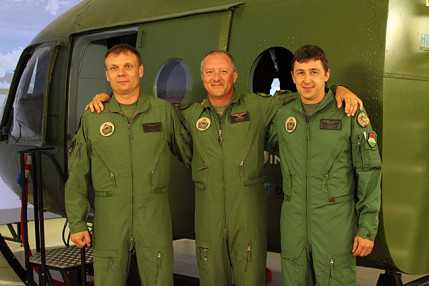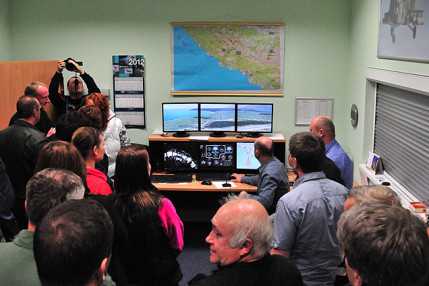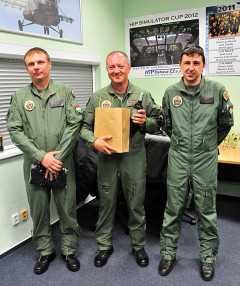Szolnok Airmen Win Special Prize at International Competition
Szöveg: Maj. (Eng.) Zsolt Bógyi | 2012. október 24. 9:42An aircrew of the HDF 86th Szolnok Helicopter Base transport helicopter battalion was invited to participate in the HIP SIMULATOR CUP 2012 international simulator competition, which took place for the second time in Ostrava, the Czech Republic. (Reporting from the spot).

The HIP is the NATO codename for the Mi-8, Mi-17 and Mi-171 medium transport helicopters. The building of the Helicopter Training Point (HTP) is located next to the airport of Ostrava, and based on our conversations with the competitors and the instructors of the HTP, we can safely say that the simulator in Ostrava is the state-of-the-art, most realistic and multi-functional one for the type which is also flown in Hungary. It is capable of simulating all seasons and weather phenomena, take-offs and landings in dusty, snow-covered and limited-size landing zones, instrument flights as well as an unimaginable number of malfunctions and special cases.
The simulator has been constructed in Russian–Czech cooperation. Although no similar devices can replace live sorties, this simulator is perfectly suitable to practice the right movements, actions and their sequences, so it is indispensable in preparing for the tasks of missions.
Nine aircrews (five Czech, three Polish and one Hungarian) participated in the Cup. After a short mission briefing and drawing the lots, the “flights" started with taking our seats in the aircraft, putting on the headphone, fastening the seat belts, starting up the engines, a checklist before the “take-off", parameters OK, “ready for departure!"
During the first mission, while heading 348 degrees, we had to determine the exact wind direction at the limited-size landing zone in front of us on the mountain peak. Of course, shortly after the take-off a malfunction was simulated on our instrument measuring wind drift, so it stopped working. We chose the wind circle method, and started a stop-watch above the mountaintop. Two minutes later we draw an imaginary line to connect our position with the landing zone, and I reported on the radio “Wind is from one niner zero degrees". Out of the nine teams, only ours was able to determine wind direction to the exact degree, and so we received a special prize for this performance.

The second mission involved a training pattern, fire in the starboard engine, extinguishing the fire, switching to single-engine flying, and then making a plane-like landing at a designated location with strict adherence to the pre-set parameters. The instructors evaluated the precision of the task execution and measured the distance of the landing point from their designated point.
The third mission was to land in a limited-size, designated landing zone after the failure of both engines. We had to make our calculations so that after the landing, the slowed-down helicopter was as close as possible to the centre of the landing zone. The instructors pointed out that once again, it was our team that had produced the nicest gliding profile and the most precise landing.
According to the overall results, we finished fifth and won the special prize in a prestigious international competition.
The members of the team were Maj. Zsolt Bógyi (pilot-in-command), Capt. Zoltán Frank (co-pilot) and WO1 Tamás Lőrincz (onboard technician).
